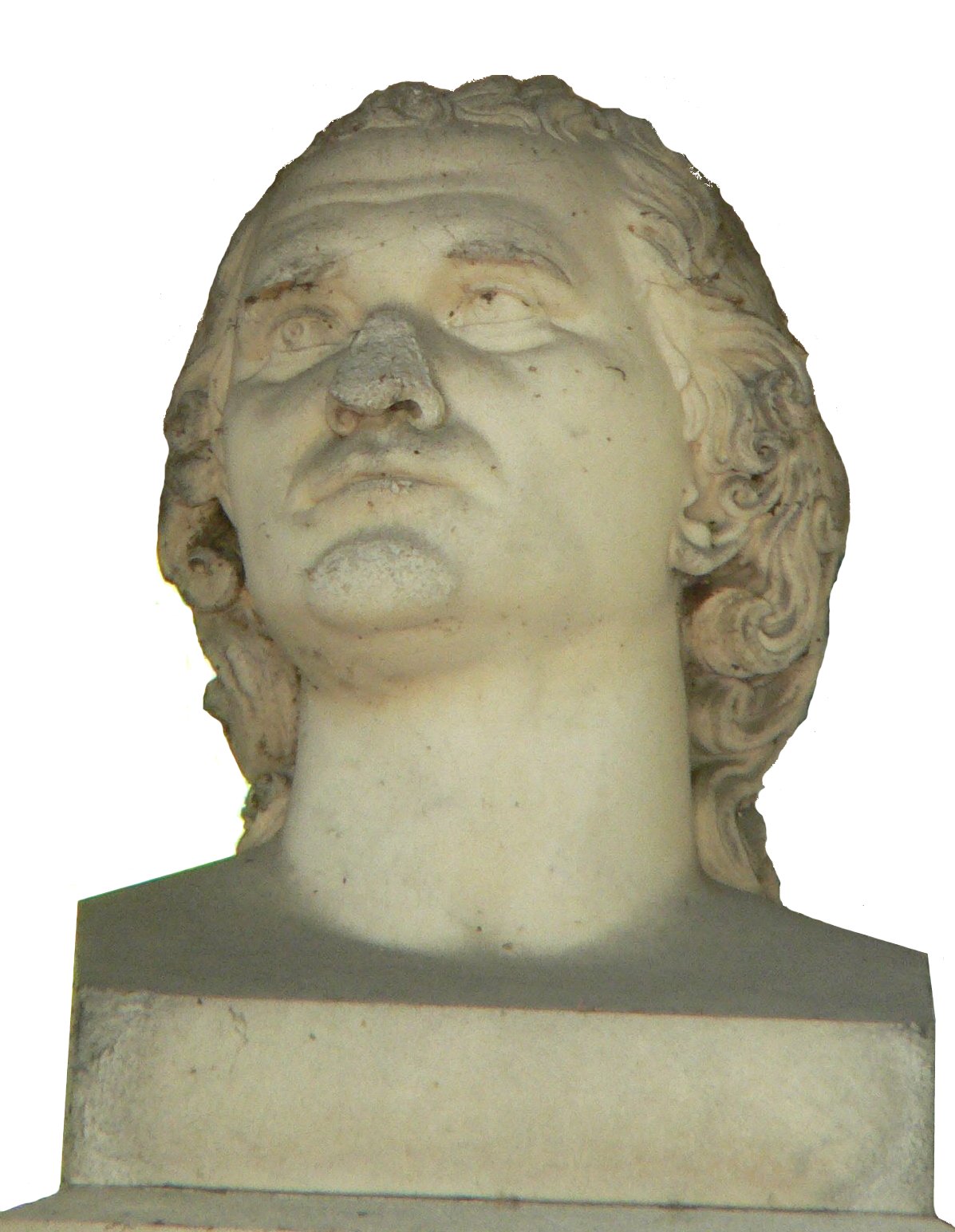|
Umbilical Point
In the differential geometry of surfaces in three dimensions, umbilics or umbilical points are points on a surface that are locally spherical. At such points the normal curvatures in all directions are equal, hence, both principal curvatures are equal, and every tangent vector is a ''principal direction''. The name "umbilic" comes from the Latin ''umbilicus'' (navel). Umbilic points generally occur as isolated points in the elliptical region of the surface; that is, where the Gaussian curvature is positive. The sphere is the only surface with non-zero curvature where every point is umbilic. A flat umbilic is an umbilic with zero Gaussian curvature. The monkey saddle is an example of a surface with a flat umbilic and on the plane every point is a flat umbilic. A torus can have no umbilics, but every closed surface of nonzero Euler characteristic, embedded smoothly into Euclidean space, has at least one umbilic. An unproven conjecture of Constantin Carathéodory states that every s ... [...More Info...] [...Related Items...] OR: [Wikipedia] [Google] [Baidu] |
Focal Surface
For a surface in three dimension the focal surface, surface of centers or evolute is formed by taking the centers of the curvature spheres, which are the tangential spheres whose radii are the reciprocals of one of the principal curvatures at the point of tangency. Equivalently it is the surface formed by the centers of the circles which osculate the curvature lines. As the principal curvatures are the eigenvalues of the second fundamental form, there are two at each point, and these give rise to two points of the focal surface on each normal direction to the surface. Away from umbilical points, these two points of the focal surface are distinct; at umbilical points the two sheets come together. When the surface has a ridge the focal surface has a cuspidal edge, three such edges pass through an elliptical umbilic and only one through a hyperbolic umbilic. At points where the Gaussian curvature is zero, one sheet of the focal surface will have a point at infinity corresponding ... [...More Info...] [...Related Items...] OR: [Wikipedia] [Google] [Baidu] |
Hyperbolic Umbilic Focal Surface
Hyperbolic is an adjective describing something that resembles or pertains to a hyperbola (a curve), to hyperbole (an overstatement or exaggeration), or to hyperbolic geometry. The following phenomena are described as ''hyperbolic'' because they manifest hyperbolas, not because something about them is exaggerated. * Hyperbolic angle, an unbounded variable referring to a hyperbola instead of a circle * Hyperbolic coordinates, location by geometric mean and hyperbolic angle in quadrant I *Hyperbolic distribution, a probability distribution characterized by the logarithm of the probability density function being a hyperbola * Hyperbolic equilibrium point, a fixed point that does not have any center manifolds * Hyperbolic function, an analog of an ordinary trigonometric or circular function * Hyperbolic geometric graph, a random network generated by connecting nearby points sprinkled in a hyperbolic space * Hyperbolic geometry, a non-Euclidean geometry * Hyperbolic group, a finitely ... [...More Info...] [...Related Items...] OR: [Wikipedia] [Google] [Baidu] |
Elliptical Umbilic Focal Surface
Elliptical may mean: * having the shape of an ellipse, or more broadly, any oval shape ** in botany, having an elliptic leaf shape ** of aircraft wings, having an elliptical planform * characterised by ellipsis (the omission of words), or by concision more broadly * an elliptical trainer, an exercise machine See also * Ellipse (other) In mathematics, an ellipse is a geometrical figure. Ellipse may also refer to: *MacAdam ellipse, an area in a chromaticity diagram * Elliptic leaf shape * Superellipse, a geometric figure As a name, it may also be: * The Ellipse, an area in Wa ... * Ellipsis (other) {{Disambiguation ... [...More Info...] [...Related Items...] OR: [Wikipedia] [Google] [Baidu] |
Cusp (singularity)
In mathematics, a cusp, sometimes called spinode in old texts, is a point on a curve where a moving point must reverse direction. A typical example is given in the figure. A cusp is thus a type of singular point of a curve. For a plane curve defined by an analytic, parametric equation :\begin x &= f(t)\\ y &= g(t), \end a cusp is a point where both derivatives of and are zero, and the directional derivative, in the direction of the tangent, changes sign (the direction of the tangent is the direction of the slope \lim (g'(t)/f'(t))). Cusps are ''local singularities'' in the sense that they involve only one value of the parameter , in contrast to self-intersection points that involve more than one value. In some contexts, the condition on the directional derivative may be omitted, although, in this case, the singularity may look like a regular point. For a curve defined by an implicit equation :F(x,y) = 0, which is smooth, cusps are points where the terms of lowest degree ... [...More Info...] [...Related Items...] OR: [Wikipedia] [Google] [Baidu] |
Monge Form
Gaspard Monge, Comte de Péluse (9 May 1746 – 28 July 1818) was a French mathematician, commonly presented as the inventor of descriptive geometry, (the mathematical basis of) technical drawing, and the father of differential geometry. During the French Revolution he served as the Minister of the Marine, and was involved in the reform of the French educational system, helping to found the École Polytechnique. Biography Early life Monge was born at Beaune, Côte-d'Or, the son of a merchant. He was educated at the college of the Oratorians at Beaune. In 1762 he went to the Collège de la Trinité at Lyon, where, one year after he had begun studying, he was made a teacher of physics at the age of just seventeen. After finishing his education in 1764 he returned to Beaune, where he made a large-scale plan of the town, inventing the methods of observation and constructing the necessary instruments; the plan was presented to the town, and is still preserved in their librar ... [...More Info...] [...Related Items...] OR: [Wikipedia] [Google] [Baidu] |
Umbilic Clasification
In the differential geometry of surfaces in three dimensions, umbilics or umbilical points are points on a surface that are locally spherical. At such points the normal curvatures in all directions are equal, hence, both principal curvatures are equal, and every tangent vector is a ''principal direction''. The name "umbilic" comes from the Latin ''umbilicus'' (navel). Umbilic points generally occur as isolated points in the elliptical region of the surface; that is, where the Gaussian curvature is positive. The sphere is the only surface with non-zero curvature where every point is umbilic. A flat umbilic is an umbilic with zero Gaussian curvature. The monkey saddle is an example of a surface with a flat umbilic and on the plane (mathematics), plane every point is a flat umbilic. A torus can have no umbilics, but every closed surface of nonzero Euler characteristic, embedded smoothly into Euclidean space, has at least one umbilic. Carathéodory conjecture, An unproven conjecture o ... [...More Info...] [...Related Items...] OR: [Wikipedia] [Google] [Baidu] |
Jacobian Determinant
In vector calculus, the Jacobian matrix (, ) of a vector-valued function of several variables is the matrix of all its first-order partial derivatives. When this matrix is square, that is, when the function takes the same number of variables as input as the number of vector components of its output, its determinant is referred to as the Jacobian determinant. Both the matrix and (if applicable) the determinant are often referred to simply as the Jacobian in literature. Suppose is a function such that each of its first-order partial derivatives exist on . This function takes a point as input and produces the vector as output. Then the Jacobian matrix of is defined to be an matrix, denoted by , whose th entry is \mathbf J_ = \frac, or explicitly :\mathbf J = \begin \dfrac & \cdots & \dfrac \end = \begin \nabla^ f_1 \\ \vdots \\ \nabla^ f_m \end = \begin \dfrac & \cdots & \dfrac\\ \vdots & \ddots & \vdots\\ \dfrac & \cdo ... [...More Info...] [...Related Items...] OR: [Wikipedia] [Google] [Baidu] |
Christopher Zeeman
Sir Erik Christopher Zeeman FRS (4 February 1925 – 13 February 2016), was a British mathematician, known for his work in geometric topology and singularity theory. Overview Zeeman's main contributions to mathematics were in topology, particularly in knot theory, the piecewise linear category, and dynamical systems. His 1955 thesis at the University of Cambridge described a new theory termed "dihomology", an algebraic structure associated to a topological space, containing both homology and cohomology, introducing what is now known as the Zeeman spectral sequence. This was studied by Clint McCrory in his 1972 Brandeis thesis following a suggestion of Dennis Sullivan that one make "a general study of the Zeeman spectral sequence to see how singularities in a space perturb Poincaré duality". This in turn led to the discovery of intersection homology by Robert MacPherson and Mark Goresky at Brown University where McCrory was appointed in 1974. From 1976 to 1977 he was ... [...More Info...] [...Related Items...] OR: [Wikipedia] [Google] [Baidu] |
Umbilic Bracelet
The umbilic torus or umbilic bracelet is a single-edged 3-dimensional shape. The lone edge goes three times around the ring before returning to the starting point. The shape also has a single external face. A cross section of the surface forms a deltoid. The umbilic torus occurs in the mathematical subject of singularity theory, in particular in the classification of umbilical points which are determined by real cubic forms a x^3 + 3 b x^2 y + 3 c x y^2 + d y^3. The equivalence classes of such cubics form a three-dimensional real projective space and the subset of parabolic forms define a surface – the umbilic torus. Christopher Zeeman named this set the umbilic bracelet in 1976. The torus is defined by the following set of parametric equations. :x = \sin u \left(7+\cos\left( - 2v\right) + 2\cos\left( + v\right)\right) :y = \cos u \left(7 + \cos\left( - 2v\right) + 2\cos\left( + v\right)\right) :z = \sin\left( - 2v\right) + 2\sin \left( + v\right) :::\text-\pi \le u \le \pi ... [...More Info...] [...Related Items...] OR: [Wikipedia] [Google] [Baidu] |
Cubic Form
In mathematics, a cubic form is a homogeneous polynomial of degree 3, and a cubic hypersurface is the zero set of a cubic form. In the case of a cubic form in three variables, the zero set is a cubic plane curve. In , Boris Delone and Dmitry Faddeev showed that binary cubic forms with integer coefficients can be used to parametrize orders in cubic fields. Their work was generalized in to include all cubic rings (a is a ring that is isomorphic to Z3 as a Z-module),In fact, Pierre Deligne pointed out that the correspondence works over an arbitrary scheme. giving a discriminant-preserving bijection between orbits of a GL(2, Z)-action on the space of integral binary cubic forms and cubic rings up to isomorphism. The classification of real cubic forms a x^3 + 3 b x^2 y + 3 c x y^2 + d y^3 is linked to the classification of umbilical points of surfaces. The equivalence classes of such cubics form a three-dimensional real projective space and the subset of parabolic forms define ... [...More Info...] [...Related Items...] OR: [Wikipedia] [Google] [Baidu] |


